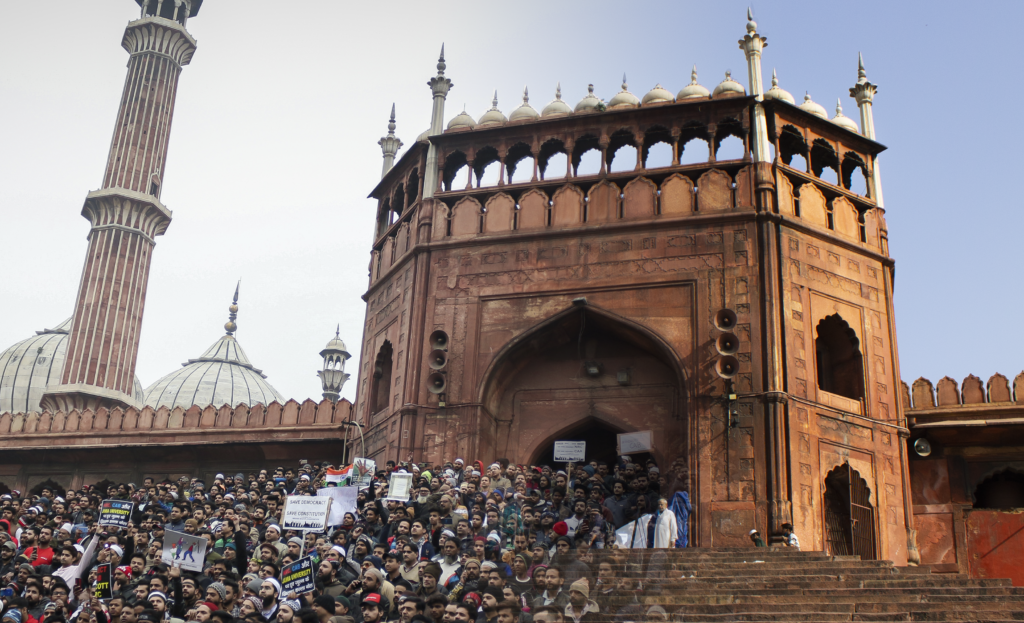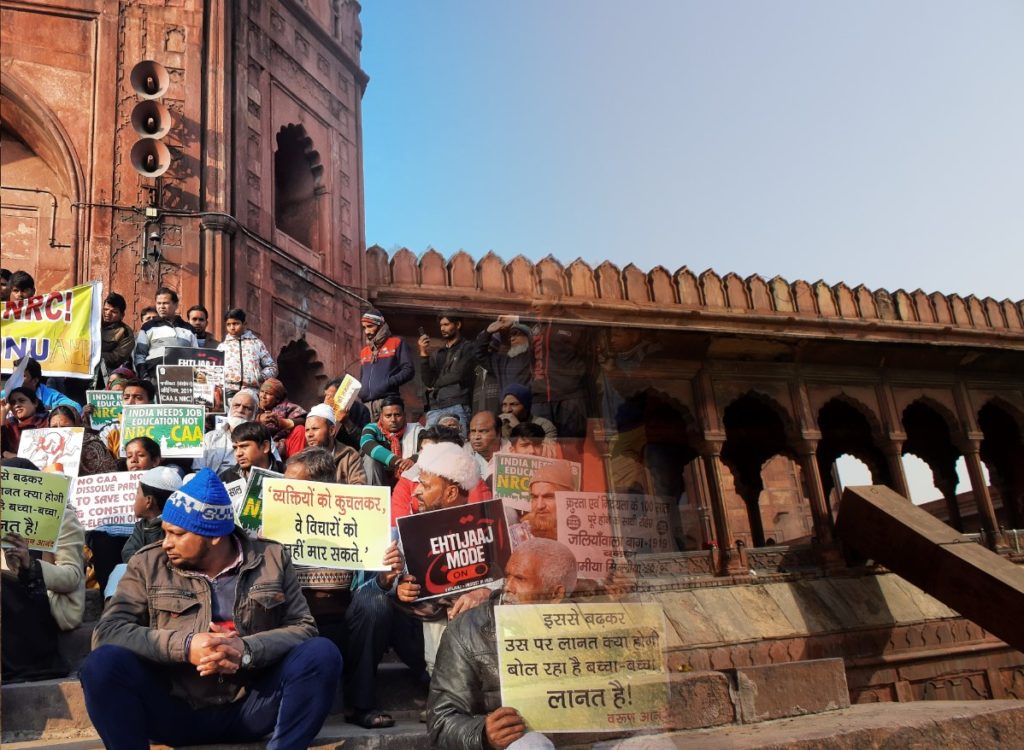Many monuments of Delhi are more than just tourist attractions, they are often places of day-to- day activities. We find intricate histories attached to each, but often, monuments are more than just historical sites: they become political spaces. This photo-essay attempts to portray how three specific monuments of Delhi have been political spaces and how they are right now, when they are not used in political capacity. The monuments in focus are India Gate, Jama Masjid, and Red Fort.
From the 1945 INA trials to the Independence Day speech by the Prime Minister to the recent farmers’ protest on Republic Day, the Red Fort has been an important political space. Since the 26th January 2021 incident, a police barricade is present around the fort and entry is prohibited.


Recently, Jama Masjid was one of the landmarks for the anti-CAA-NRC protests. These photographs show how it was during the protest and how it is on a Sunday morning.



Last, but definitely not the least, is the India Gate, a place of immense political importance. One of the most lively places in Delhi, with people around it at all times, be it for a candle light march, or for a protest, or to simply enjoy the place and have some chuski! Recently, even India Gate has come under police barricading. The pictures here show how the India Gate, that is always bustling with energy remains quite empty now.

The writer had completed her schooling from Shikshantar School and she is currently studying in Ashoka University. She is interested in photography, history, international relations, music, and dance majorly, but she is really like to explore other fields too.



An impressive share! I have just forwarded this onto a friend who had been doing a little research on this.
And he in fact bought me breakfast simply because I found it for him…
lol. So allow me to reword this…. Thanks for the meal!!
But yeah, thanks for spending the time to discuss this subject here on your site.